
Naejangsan National Park - A Natural Wonderland in South Korea
Explore Naejangsan National Park, South Korea's hidden gem, renowned for its stunning autumn foliage, serene temples, and panoramic mountain views.
Naejangsan National Park is one of South Korea's most beautiful natural destinations, especially renowned for its breathtaking autumn foliage. Located in the North Jeolla Province, the park covers over 80 square kilometers and offers visitors a chance to immerse themselves in stunning landscapes, rich history, and vibrant flora and fauna. The park's name, 'Naejang,' means 'many secrets,' and it lives up to this name with its hidden temples, cascading waterfalls, and serene walking paths. One of the main attractions here is the Naejangsan Mountain, which offers panoramic views of the region and is a popular spot for hiking. The best time to visit is during the fall when the entire park is painted in hues of red, yellow, and orange. In addition to its natural beauty, Naejangsan National Park is home to several historical and cultural sites. The temples of Baekyangsa and Naejangsa offer a glimpse into the country's rich Buddhist heritage. These temples are particularly enchanting during the autumn season when they are surrounded by colorful foliage, providing a picturesque setting for reflection and relaxation. Visitors can also enjoy various outdoor activities such as leisurely walks along the park's many trails, picnicking by the waterfalls, or simply soaking in the peaceful atmosphere. Whether you're an avid hiker, a history enthusiast, or someone looking for a serene escape, Naejangsan National Park promises a memorable experience in the heart of nature.
Local tips in Naejangsan National Park
- Visit in late October to early November for the most spectacular autumn colors.
- Wear comfortable hiking shoes; the trails can be steep and uneven.
- Bring a camera or smartphone to capture the stunning scenery.
- Check the weather forecast before your visit, as the park is best enjoyed on clear days.
- Try local specialties at nearby restaurants for an authentic culinary experience.
Naejangsan National Park - A Natural Wonderland in South Korea
Naejangsan National Park is one of South Korea's most beautiful natural destinations, especially renowned for its breathtaking autumn foliage. Located in the North Jeolla Province, the park covers over 80 square kilometers and offers visitors a chance to immerse themselves in stunning landscapes, rich history, and vibrant flora and fauna. The park's name, 'Naejang,' means 'many secrets,' and it lives up to this name with its hidden temples, cascading waterfalls, and serene walking paths. One of the main attractions here is the Naejangsan Mountain, which offers panoramic views of the region and is a popular spot for hiking. The best time to visit is during the fall when the entire park is painted in hues of red, yellow, and orange. In addition to its natural beauty, Naejangsan National Park is home to several historical and cultural sites. The temples of Baekyangsa and Naejangsa offer a glimpse into the country's rich Buddhist heritage. These temples are particularly enchanting during the autumn season when they are surrounded by colorful foliage, providing a picturesque setting for reflection and relaxation. Visitors can also enjoy various outdoor activities such as leisurely walks along the park's many trails, picnicking by the waterfalls, or simply soaking in the peaceful atmosphere. Whether you're an avid hiker, a history enthusiast, or someone looking for a serene escape, Naejangsan National Park promises a memorable experience in the heart of nature.
When is the best time to go to Naejangsan National Park?
Iconic landmarks you can’t miss
Juknokwon (Bamboo Forest)
Explore Juknokwon Bamboo Forest: A serene escape with towering bamboo, scenic trails, and rich cultural experiences in Jeollanam-do, South Korea.
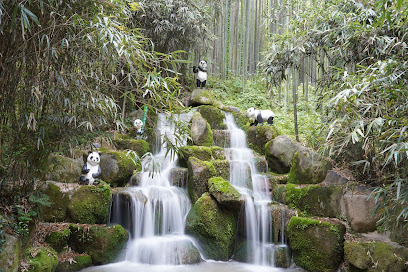
Hallasan National Park
Discover the breathtaking beauty of Hallasan National Park, a UNESCO World Heritage site with stunning landscapes, diverse wildlife, and hiking trails for all adventurers.
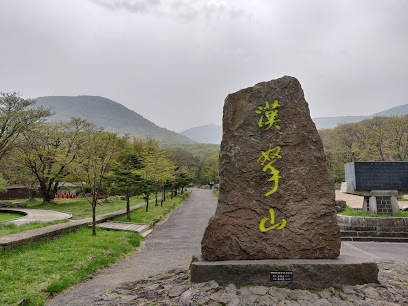
Baegyangsa
Explore Baegyangsa Temple, a serene Buddhist sanctuary in Jeollanam-do, surrounded by lush nature and rich cultural heritage.
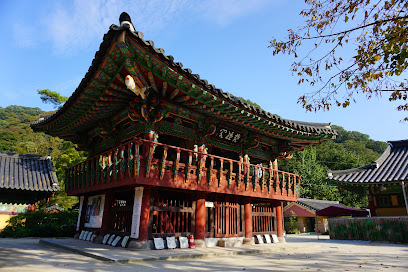
Bukhansan National Park
Experience the breathtaking beauty of Bukhansan National Park, a natural wonder with stunning trails and rich biodiversity just outside Seoul.
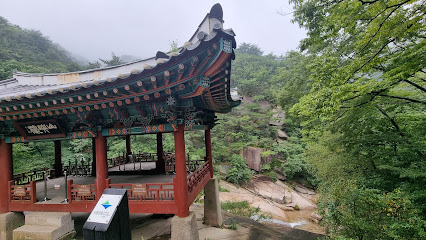
Byeonsanbando Naesosa District National Park
Discover the breathtaking beauty and cultural heritage of Byeonsanbando Naesosa District National Park, a perfect blend of nature and history in South Korea.
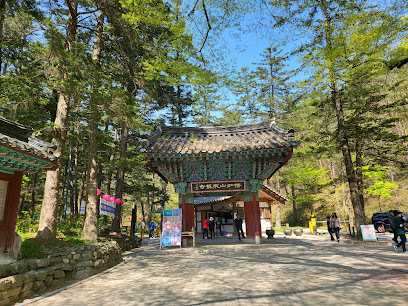
Namhansanseong Fortress Temporary Palace
Explore the enchanting Namhansanseong Fortress Temporary Palace, a historical gem surrounded by breathtaking landscapes in Gyeonggi-do, South Korea.
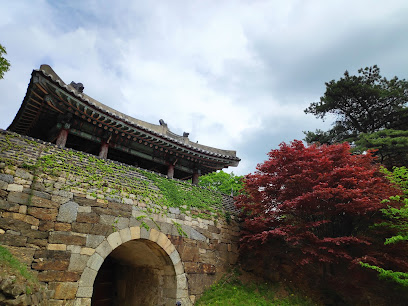
Mudeungsan National Park
Explore the breathtaking beauty and diverse ecosystems of Mudeungsan National Park in Gwangju, South Korea, a must-visit destination for nature lovers.
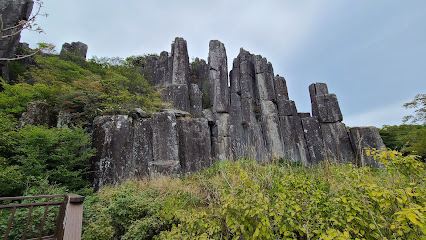
Songnisan National Park
Explore the stunning natural landscapes, rich biodiversity, and cultural heritage at Songnisan National Park in Chungcheongbuk-do, South Korea.
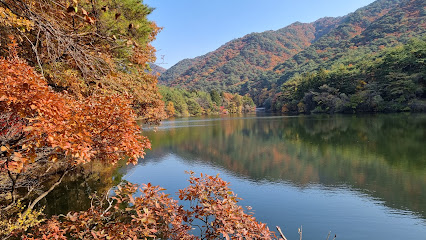
Expo Bridge
Discover the stunning Expo Bridge in Daejeon, an architectural marvel offering breathtaking views and a unique perspective of the vibrant city.
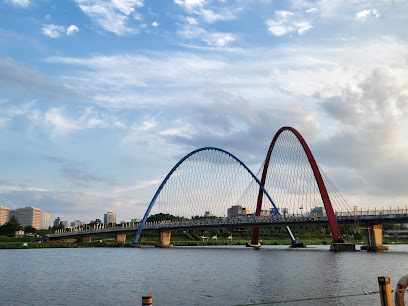
Naejangsa Buddhist Retreat
Experience peace and spiritual enlightenment at Naejangsa Buddhist Retreat, surrounded by breathtaking nature in Jeongeup-si, South Korea.
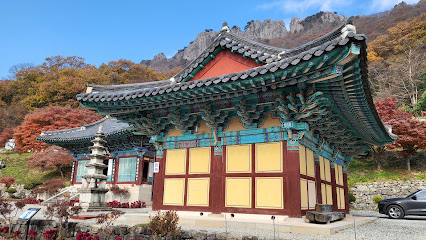
Naejangsan National Park Naejang Visitor Center
Discover the breathtaking beauty and ecological treasures at Naejangsan National Park Visitor Center in Jeollabuk-do, South Korea.
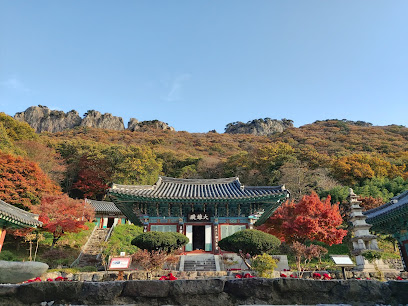
Gayasan National Park
Experience the breathtaking beauty and rich culture of Gayasan National Park, a must-visit destination for nature lovers and adventure seekers in South Korea.
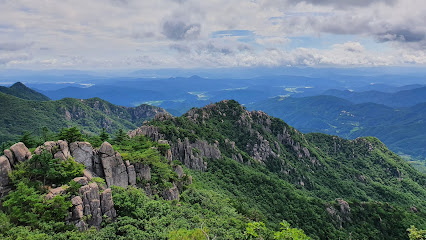
Namhansanseong Park
Explore the breathtaking landscapes and historic treasures of Namhansanseong Park, a serene state park in Gyeonggi-do, South Korea.
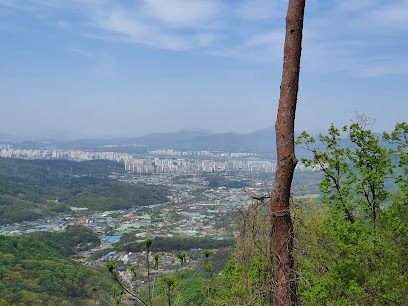
Naejangsan Maple Ecology Park
Explore the natural beauty of Naejangsan Maple Ecology Park, a stunning destination for autumn foliage and ecological wonder in Jeollabuk-do, South Korea.
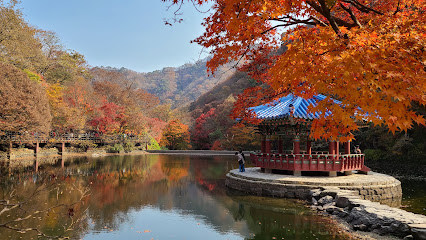
Naejangsan Baegyangsa District National Park
Explore the breathtaking natural beauty of Naejangsan Baegyangsa National Park, a must-visit destination for nature lovers and adventure seekers in South Korea.
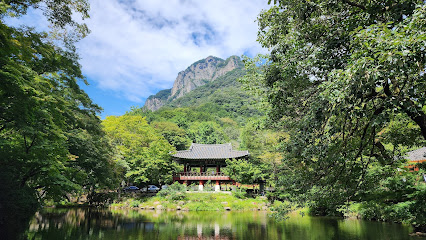
Unmissable attractions to see
Baegyangsa
Discover the tranquility and cultural richness of Baegyangsa, a historic Buddhist temple in the heart of Jeollanam-do, surrounded by breathtaking nature.
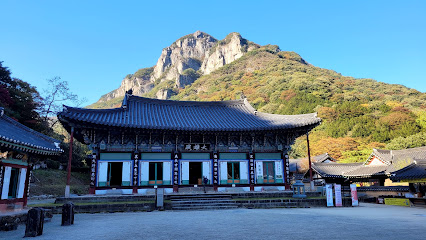
Soswaewon Garden
Explore the tranquil beauty of Soswaewon Garden, a stunning blend of nature and traditional Korean aesthetics in the heart of Damyang.
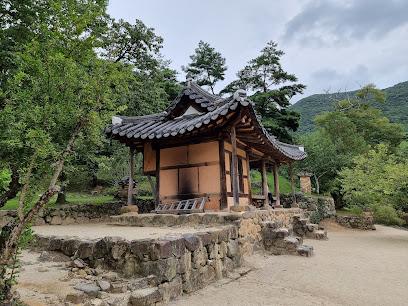
Naejangsa Buddhist Retreat
Discover peace and harmony at Naejangsa Buddhist Retreat, a serene sanctuary in Jeongeup-si, perfect for spiritual renewal and cultural exploration.
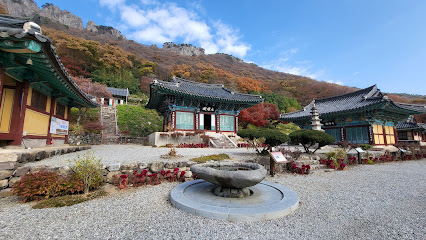
Damyang Gwanbangjerim Forest
Discover the enchanting beauty of Damyang Gwanbangjerim Forest, a tranquil bamboo paradise in Jeollanam-do, South Korea.
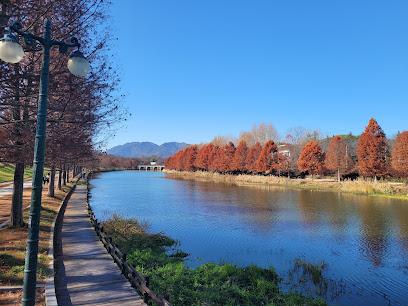
담양 용마루길
Explore the serene landscapes and cultural richness of Damyang's premier tourist attraction in Jeollanam-do, a must-visit for every traveler.
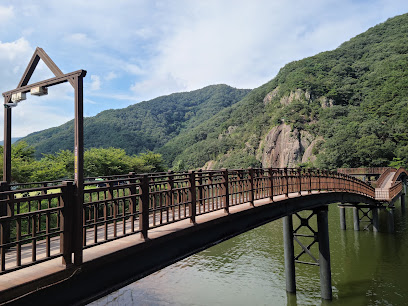
Naejangsan National Park Naejang Visitor Center
Discover the enchanting landscapes and rich biodiversity of Naejangsan National Park, a must-visit nature escape in Jeollabuk-do, South Korea.
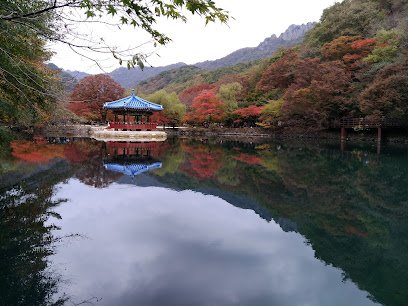
담양호국민관광단지
Explore the serene beauty and cultural heritage of Wolgye-ri, a picturesque tourist attraction in Damyang-gun, Jeollanam-do, South Korea.
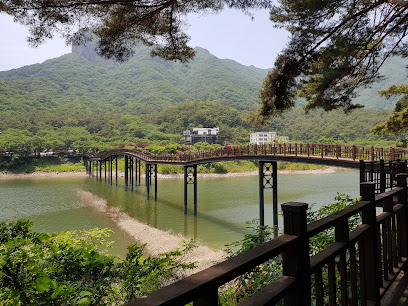
Jeongeupsa Park
Experience the tranquility and beauty of Jeongeupsa Park, a must-visit natural oasis in Jeongeup-si, Jeollabuk-do, perfect for relaxation and exploration.
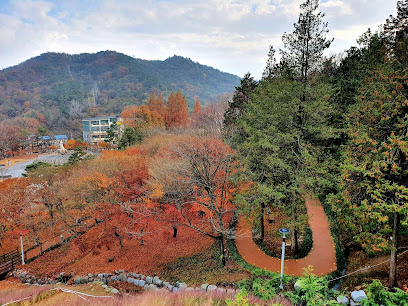
Naejangsan Maple Ecology Park
Explore the breathtaking autumn foliage and serene trails of Naejangsan Maple Ecology Park, a natural paradise in Jeollabuk-do, South Korea.
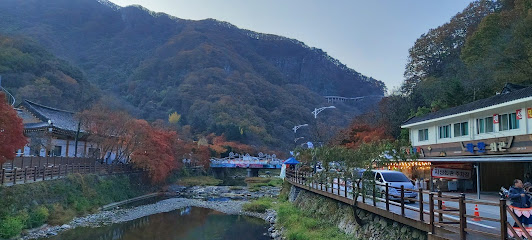
Naejangsan Baegyangsa District National Park
Discover the breathtaking beauty of Naejangsan Baegyangsa District National Park, a paradise for nature lovers and adventure seekers in Jeollanam-do.
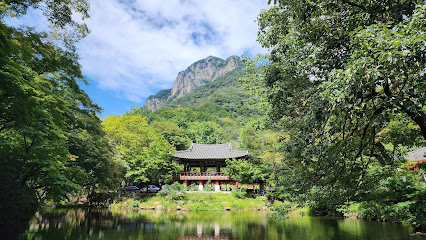
Naejangsan Cable Car
Experience breathtaking views and natural beauty at Naejangsan Cable Car, a must-visit attraction in Jeollabuk-do, South Korea.
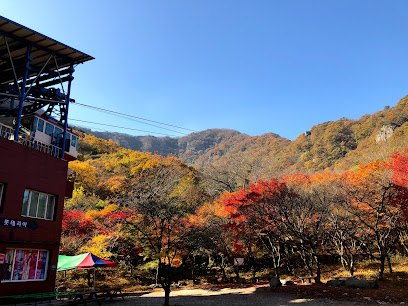
Korea Bamboo Museum
Explore the Korea Bamboo Museum in Damyang-gun, where art and nature unite to celebrate the beauty and versatility of bamboo.
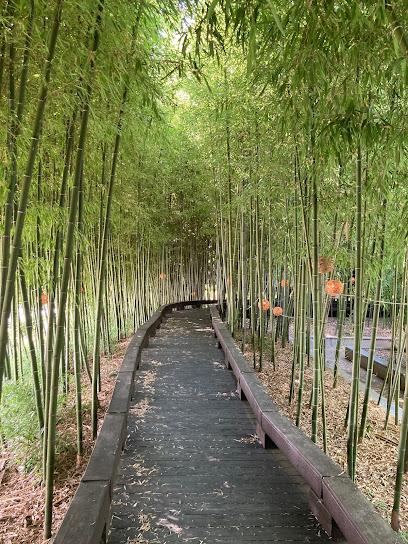
Namchang Valley
Immerse yourself in the natural beauty of Namchang Valley, a serene escape in Jeollanam-do, South Korea, perfect for nature lovers and adventurers.
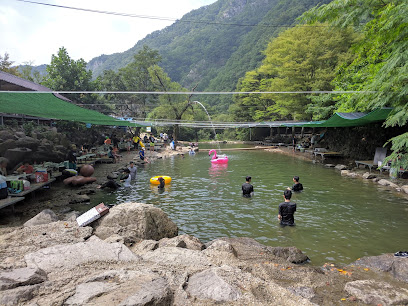
내장산 조각공원
Experience the beauty and tranquility of Baengmagoji Park in Jeongeup, a perfect blend of nature and cultural heritage.
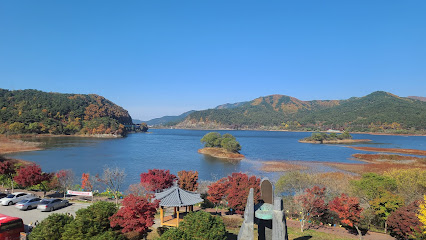
Jangseongho Reservoir Tourist Site Office
Explore the tranquil beauty of Jangseongho Reservoir, a perfect destination for nature lovers and outdoor enthusiasts in Jangseong-gun, South Korea.
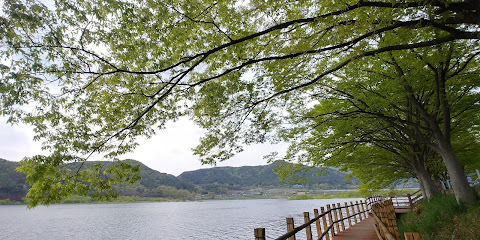
Essential places to dine
Naejangsan National Park
Explore Naejangsan National Park: A Stunning Natural Retreat Known for Its Autumn Foliage and Scenic Trails in Jeollabuk-do.
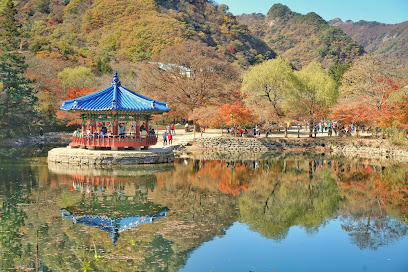
Mokmyeoksanbang
Experience authentic Korean flavors at Mokmyeoksanbang in Seoul's Jung District - a true culinary delight for all food lovers.
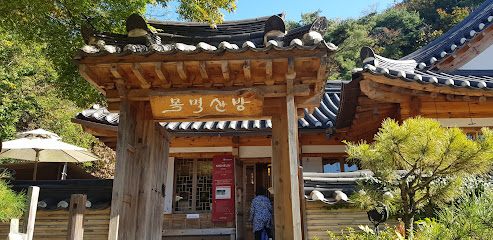
Iljik Restaurant
Experience authentic Korean flavors at Iljik Restaurant in Andong-si - where tradition meets taste in every dish.
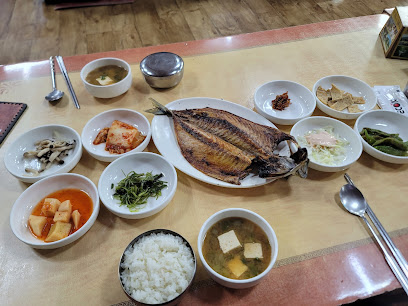
Braai Republic
Discover the rich flavors of South Africa at Braai Republic in Seoul's Yongsan District - where every meal is a celebration.
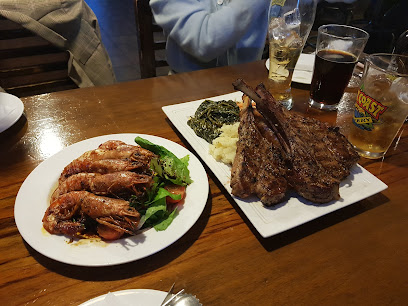
Paradiso Perduto Italian Cafe & Kitchen
Experience authentic Italian cuisine at Paradiso Perduto Cafe & Kitchen in Gunsan-si - where every meal is a delightful journey through Italy.
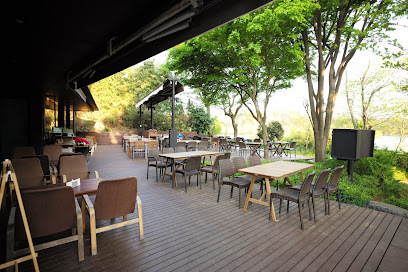
Naejangsan National Park Naejang Visitor Center
Explore the enchanting landscapes of Naejangsan National Park - a paradise for hikers and nature lovers in South Korea.
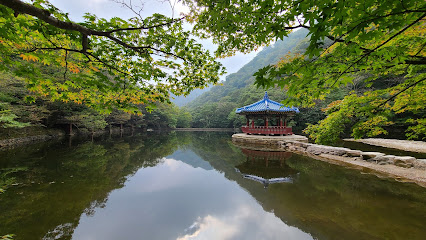
Market O, Apgujeong
Discover exquisite Italian flavors at Market O in Apgujeong—an upscale culinary gem that captivates every palate.
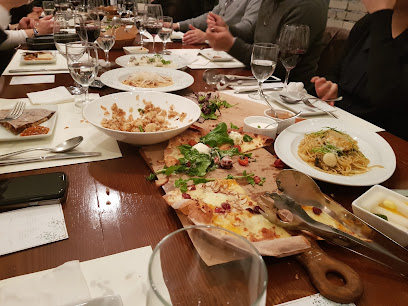
Naejangsan Maple Ecology Park
Discover tranquility at Naejangsan Maple Ecology Park, where vibrant autumn leaves create a stunning backdrop for relaxation and exploration.
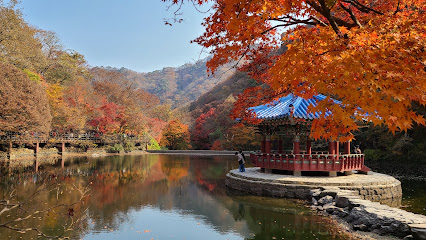
Naejangsan Baegyangsa District National Park
Experience breathtaking landscapes and rich biodiversity at Naejangsan Baegyangsa District National Park in Jeollanam-do.
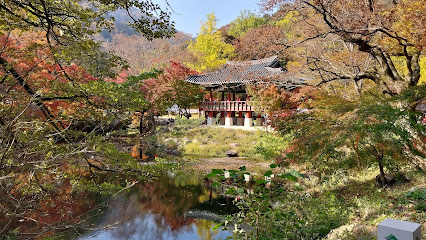
Naejangsan Cable Car
Naejangsan Cable Car: A breathtaking ride through scenic landscapes of Jeollabuk-do, perfect for nature lovers and adventure seekers alike.
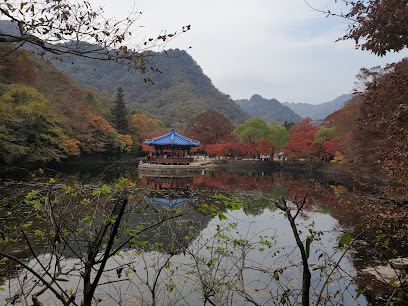
Volpino
Experience authentic Italian cuisine at Volpino in Gangnam – where tradition meets modern elegance for a delightful dining experience.
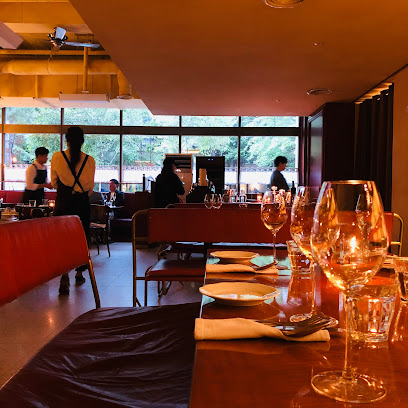
알리아농 부산 라발스호텔점 Alianon Busan Lavalse hotel
Experience the ultimate buffet at Alianon Busan Lavalse Hotel, where culinary excellence meets comfort in the heart of Busan.
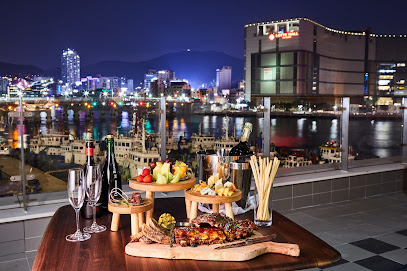
Palsun
Discover the art of Chinese dining at Palsun in Seoul—where tradition meets modern elegance for an unforgettable culinary journey.
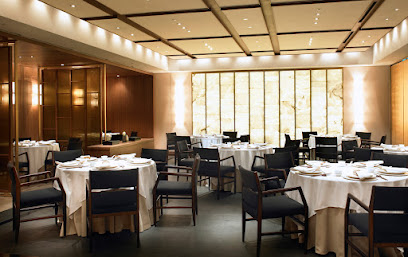
Mokmyeoksan Horaengi
Discover Mokmyeoksan Horaengi: A serene Korean restaurant nestled in Namsan Forest Park offering authentic cuisine amidst stunning natural beauty.
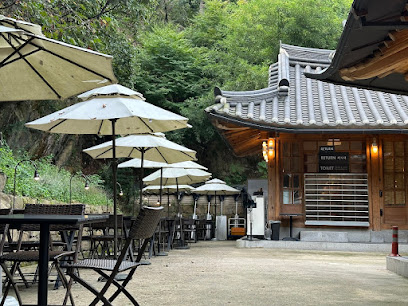
Tavolo 24
Experience culinary excellence at Tavolo 24 - Seoul's premier buffet restaurant offering diverse flavors in a chic setting.
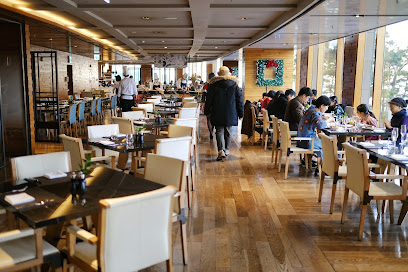
Markets, malls and hidden boutiques
Naejangsan National Park
Explore the breathtaking landscapes and rich biodiversity of Naejangsan National Park, a must-visit destination for nature lovers and adventure seekers.
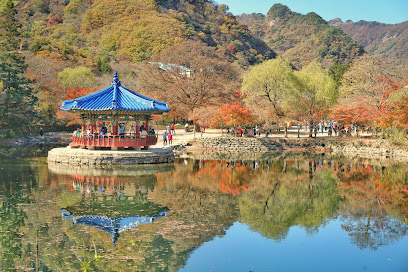
Naejangsan National Park Naejang Visitor Center
Explore the breathtaking landscapes and rich biodiversity of Naejangsan National Park, a haven for nature lovers and adventure seekers alike.
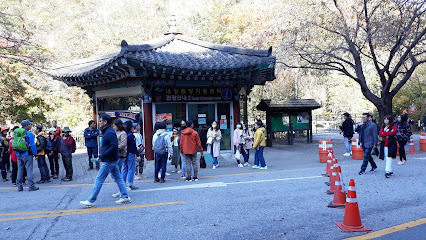
Naejangsan Maple Ecology Park
Discover the stunning beauty of Naejangsan Maple Ecology Park in Jeollabuk-do, where vibrant autumn leaves and rich wildlife create a serene nature escape.
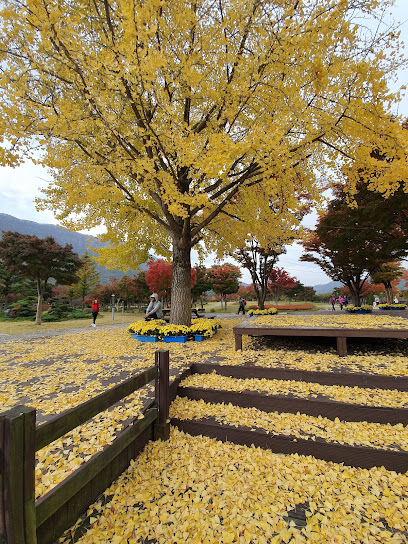
Naejangsan Baegyangsa District National Park
Explore the natural wonders of Naejangsan Baegyangsa National Park, a stunning destination for nature lovers and adventure seekers in South Korea.
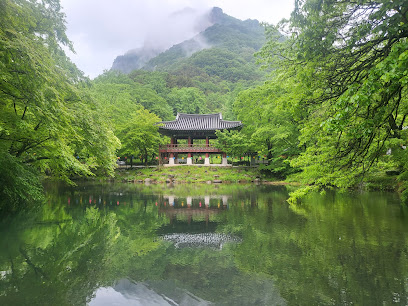
Naejangsan Cable Car
Soar to new heights on the Naejangsan Cable Car, where breathtaking mountain views and nature's beauty await in Jeollabuk-do, South Korea.
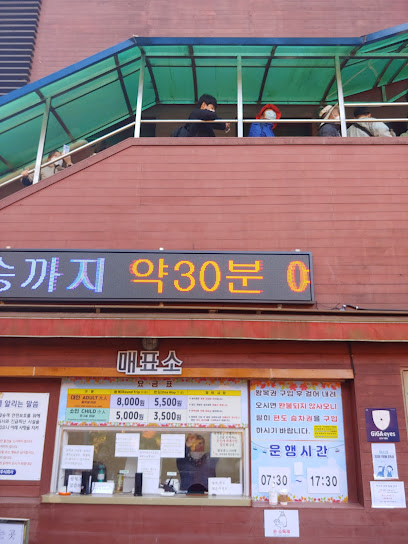
Uhwajeong Pavilion
Experience the serene beauty and rich cultural heritage at Uhwajeong Pavilion, a captivating tourist attraction in Jeollabuk-do, South Korea.

Naejangsan
Explore the natural beauty and breathtaking landscapes of Naejangsan, a premier mountain peak in Jeongeup-si, South Korea, perfect for all nature enthusiasts.
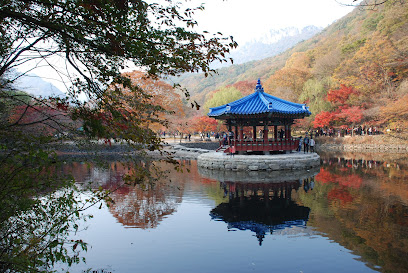
Naejangsan Yonggul Grotto
Explore the breathtaking beauty and cultural significance of Naejangsan Yonggul Grotto, a serene gem in Jeollabuk-do, South Korea.
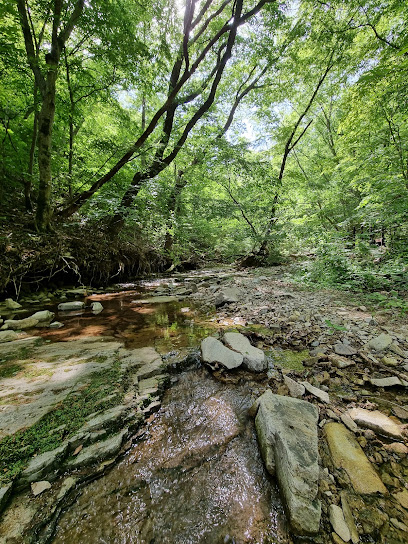
Cheng han
Experience the vibrant shopping and rich culture of Cheng Han Shopping Mall in Muju-gun, a unique destination for every traveler.

Kim lana
Explore Kim Lana in Muju for a unique shopping experience filled with authentic Korean products and local crafts.

Dream
Experience the vibrant atmosphere of Dream Shopping Mall in Muju with diverse shopping, delightful dining, and community events.

Rain ssu
Explore the unique offerings of Rain ssu in Muju, where local craftsmanship meets stunning natural beauty, perfect for memorable souvenirs.

ShopRite
Experience the local flavors and essentials at ShopRite in Muju, a must-visit store for every traveler exploring this beautiful region.

ski shop
Explore Muju's ski shop for top-quality gear and expert advice, making your winter sports experience unforgettable in South Korea's stunning landscapes.

Intaewon
Experience the dynamic shopping and cultural delights at Intaewon, the ultimate shopping mall in Muju-gun, Jeollabuk-do.

Essential bars & hidden hideouts
식도락
Discover the authentic flavors of Korea at 식도락 in Sunchang, where every dish tells a story of tradition and taste.

모랑호프
Experience the lively atmosphere of 모랑호프 in Jeongeup-si, a bar that brings together locals and tourists for unforgettable nights.

간이역부영점
Experience the vibrant nightlife of Jeongeup-si at 간이역부영점, where friendly service meets a lively atmosphere for an unforgettable bar experience.

Sooya Pocha
Discover the charm of Sooya Pocha, a lively pub in Jeongeup-si serving traditional Korean snacks and drinks in a welcoming atmosphere.
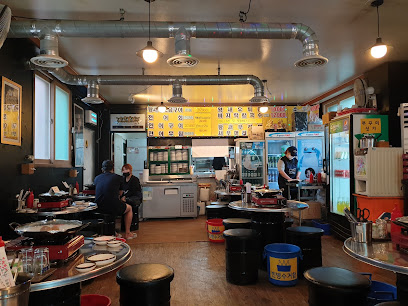
한잔하시죠
Discover the vibrant nightlife at Jeongeup's 한잔하시죠 Bar, where local flavors meet global drinks in a lively atmosphere.

로세토
Discover the creative cocktail culture at 로세토 Cocktail Bar in Jeongeup-si, where vibrant atmosphere meets expertly crafted drinks.

백화원단란주점
Discover the lively atmosphere of 백화원단란주점 in Jangseong-gun, where karaoke and fun meet for an unforgettable night of singing and entertainment.

어제거기호프
Discover the lively nightlife at 어제거기호프 in Jeongeup-si, where great drinks and a warm atmosphere await you.

동아리호프
Experience the vibrant local nightlife at 동아리호프, a charming bar in Jeongeup-si, Jeollabuk-do, offering a taste of local brews and a friendly atmosphere.

오늘도한잔
Discover the vibrant nightlife of Jeongeup-si at 오늘도한잔, where lively atmosphere meets exceptional local drinks.

그린호프
Discover the lively atmosphere of 그린호프 in Jeongeup-si, where local culture and vibrant nightlife come together for an unforgettable experience.

발리단란주점
Discover the vibrant energy of 발리단란주점, Jeongeup-si's top karaoke bar for unforgettable nights filled with music and fun.

Dong-Gyeong
Experience the vibrant nightlife at Dong-Gyeong, a local bar in Jeongeup-si, offering a unique blend of traditional and modern Korean beverages.

보쌈국수
Experience Jeongeup-si's culinary gem, 보쌈국수, where rich flavors and a cozy atmosphere await every visitor.

노리파크정읍점
Discover the vibrant nightlife of Jeongeup at 노리파크정읍점, a bar offering a unique selection of drinks and an inviting atmosphere.

Local Phrases about Naejangsan National Park
-
- Hello안녕하세요
[ahn-nyeong-ha-se-yo] - Goodbye안녕히 가세요
[ahn-nyeong-hee ga-se-yo] - Yes네
[ne] - No아니요
[a-ni-yo] - Please/You're welcome부탁합니다/천만에요
[bu-tak-ham-ni-da/cheon-man-e-yo] - Thank you감사합니다
[gam-sa-ham-ni-da] - Excuse me/Sorry죄송합니다
[joe-song-ham-ni-da] - How are you?어떻게 지내세요?
[eo-tteoh-ge ji-nae-se-yo?] - Fine. And you?잘 지내고 있어요. 그대는요?
[jal ji-nae-go i-sseo-yo. geu-dae-neun-yo?] - Do you speak English?영어 할 줄 아세요?
[yeong-eo hal jul a-se-yo?] - I don't understand이해하지 못해요
[i-hae-ha-ji mo-tae-yo]
- Hello안녕하세요
-
- I'd like to see the menu, please메뉴를 보여주세요
[me-nyu-reul bo-yeo-ju-se-yo] - I don't eat meat고기를 먹지 않아요
[go-gi-reul meok-ji a-na-yo] - Cheers!건배!
[geon-bae!] - I would like to pay, please계산할게요
[gye-san-hal-ge-yo]
- I'd like to see the menu, please메뉴를 보여주세요
-
- Help!도와주세요!
[do-wa-ju-se-yo!] - Go away!가세요!
[ga-se-yo!] - Call the Police!경찰을 불러주세요!
[gyeong-chal-eul bulleo-ju-se-yo!] - Call a doctor!의사를 불러주세요!
[ui-sa-reul bulleo-ju-se-yo!] - I'm lost길을 잃었어요
[gil-eul ilh-eoss-eo-yo] - I'm ill아파요
[a-pa-yo]
- Help!도와주세요!
-
- I'd like to buy...사고 싶어요...
[sa-go shi-peo-yo...] - I'm just looking구경만 할게요
[gu-gyeong-man hal-ge-yo] - How much is it?얼마에요?
[eol-mae-e-yo?] - That's too expensive너무 비쌉니다
[neo-mu bi-ssap-ni-da] - Can you lower the price?가격을 깎아주실 수 있나요?
[ga-geuk-eul kka-ka-ju-shil su i-na-yo?]
- I'd like to buy...사고 싶어요...
-
- What time is it?지금 몇 시에요?
[ji-geum myeot shi-e-yo?] - It's one o'clock한 시에요
[han shi-e-yo] - Half past (10)열 시 반
[yeol shi ban] - Morning아침
[a-chim] - Afternoon오후
[o-hu] - Evening저녁
[jeo-nyeok] - Yesterday어제
[eo-je] - Today오늘
[o-neul] - Tomorrow내일
[nae-il] - 1하나
[ha-na] - 2둘
[dul] - 3셋
[set] - 4넷
[net] - 5다섯
[da-seot] - 6여섯
[yeo-seot] - 7일곱
[il-gop] - 8여덟
[yeo-deol] - 9아홉
[a-hop] - 10열
[yeol]
- What time is it?지금 몇 시에요?
-
- Where's a/the...?...이 어디에 있어요?
[...i eo-di-e iss-eo-yo?] - What's the address?주소가 뭐에요?
[ju-so-ga mwo-e-yo?] - Can you show me (on the map)?지도로 보여주세요
[ji-do-ro bo-yeo-ju-se-yo] - When's the next (bus)?다음 버스는 언제 와요?
[da-eum beo-seu-neun eon-je wa-yo?] - A ticket (to ....)표를 주세요 (....으로)
[pyo-reul ju-se-yo (....eu-ro)]
- Where's a/the...?...이 어디에 있어요?
History of Naejangsan National Park
-
Naejangsan, located in Jeongeup, Jeollabuk-do, is a majestic mountain that has been a natural wonder for centuries. The name 'Naejang' means 'many secrets,' reflecting the mountain's hidden beauty and complex geography. The mountain area has been recognized for its scenic splendor since the Silla Dynasty (57 BCE – 935 CE) and has been a site of historical significance ever since.
-
Naejangsa Temple, nestled within Naejangsan National Park, was originally established in 636 AD during the Baekje Kingdom. The temple has long been a center of Buddhist worship and has seen numerous reconstructions and restorations. One notable event was its destruction during the Japanese invasions of Korea (1592-1598) and its subsequent reconstruction. The temple complex today retains several historic artifacts and is a key cultural site within the park.
-
Baegyangsa Temple, another significant temple within Naejangsan National Park, was founded in 632 AD. Over the centuries, the temple has been a symbol of Confucian and Buddhist interactions in Korean history. Baegyangsa is known for its beautiful architecture and serene environment, providing a glimpse into Korea's spiritual and cultural heritage.
-
During the Goryeo Dynasty (918–1392), Naejangsan became a central site for cultural and artistic development. The mountain's temples served as hubs for Buddhist scholarship and artistic endeavors, attracting monks, scholars, and artists. Manuscripts, paintings, and sculptures from this period highlight the cultural richness of the Goryeo era and its contributions to Korean heritage.
-
In the Joseon Dynasty (1392–1897), the Naejangsan area continued to thrive as a cultural and spiritual center. However, it also faced challenges, including invasions and internal strife. Despite these difficulties, efforts to preserve the natural beauty and cultural significance of Naejangsan persisted. The temples were repeatedly restored, and the mountain remained a symbol of resilience and spiritual continuity.
-
In 1971, Naejangsan was designated as a national park, officially recognizing its ecological, cultural, and historical significance. This designation marked the beginning of concerted conservation efforts to protect the park's rich biodiversity and cultural heritage. Today, Naejangsan National Park is a popular destination for both domestic and international visitors, offering a blend of natural beauty and historical depth.
Naejangsan National Park Essentials
-
Naejangsan National Park is located in Jeongeup, North Jeolla Province, South Korea. The nearest major city is Gwangju, which has an airport (Gwangju Airport) and a well-connected train station. From Gwangju, you can take a bus or drive to the park. Another option is to take a KTX (Korea Train Express) train to Jeongeup Station, from which you can catch a local bus or taxi directly to the park. The journey from Seoul to Jeongeup by KTX takes approximately 1.5 to 2 hours.
-
Within Naejangsan National Park, the most convenient way to get around is on foot, as the park is designed for hiking and walking. For longer distances within the region, local buses and taxis are available. Renting a car is also a viable option if you prefer more flexibility. However, parking within the park can be limited during peak seasons. Public transportation options are reliable and frequent, making it easy to travel to and from the park.
-
The official currency in South Korea is the South Korean Won (KRW). Credit and debit cards are widely accepted in most restaurants, hotels, and shops in and around Naejangsan National Park. However, it's advisable to carry some cash, especially for smaller purchases or in rural areas where card acceptance may be limited. ATMs are available in nearby towns such as Jeongeup. Ensure your card is compatible with international ATMs.
-
Naejangsan National Park is generally very safe for tourists. South Korea has a low crime rate, but it is still wise to take basic precautions. Avoid leaving your belongings unattended and be cautious in crowded areas. There are no specific high-crime areas targeting tourists within the park. Emergency services are efficient, and the park staff are helpful and can provide assistance if needed.
-
In the event of an emergency, dial 119 for immediate assistance, which will connect you to fire and medical services. For police assistance, dial 112. There are medical facilities in nearby towns such as Jeongeup, and some park staff are trained in first aid. It is recommended to have travel insurance that covers medical emergencies. Pharmacies in nearby towns can provide over-the-counter medications for minor health issues.
-
Fashion: Do wear comfortable and appropriate hiking clothes and shoes. Avoid overly revealing outfits. Religion: Do show respect when visiting temples or shrines within the park. Remove your shoes before entering these places. Public Transport: Do offer your seat to elderly passengers and avoid speaking loudly. Don't eat or drink on public transport. Greetings: Do greet people with a slight bow or a polite nod. Handshakes are less common but acceptable. Eating & Drinking: Do try local foods available at nearby eateries. Don't waste food or leave a mess in picnic areas.
-
To experience Naejangsan National Park like a local, visit during the autumn season when the foliage is at its peak, offering spectacular views. Engage with locals and park staff to learn about the best hiking trails and scenic spots. Try traditional Korean foods at local restaurants in Jeongeup. Participate in local events or festivals if they coincide with your visit. Don't miss the opportunity to visit the Baekyangsa and Naejangsa temples within the park for a serene cultural experience.
Trending Landmarks in Naejangsan National Park
-
Juknokwon (Bamboo Forest)
-
Hallasan National Park
-
Baegyangsa
-
Bukhansan National Park
-
Byeonsanbando Naesosa District National Park
-
Namhansanseong Fortress Temporary Palace
-
Mudeungsan National Park
-
Songnisan National Park
-
Expo Bridge
-
Naejangsa Buddhist Retreat
-
Naejangsan National Park Naejang Visitor Center
-
Gayasan National Park
-
Namhansanseong Park
-
Naejangsan Maple Ecology Park
-
Naejangsan Baegyangsa District National Park
Nearby Cities to Naejangsan National Park
-
Things To Do in Jeonju
-
Things To Do in Suncheon
-
Things To Do in Mokpo
-
Things To Do in Daejeon
-
Things To Do in Daegu
-
Things To Do in Busan
-
Things To Do in Suwon
-
Things To Do in Andong
-
Things To Do in Ulsan
-
Things To Do in Gyeongju
-
Things To Do in Incheon
-
Things To Do in Jeju City
-
Things To Do in Pohang
-
Things To Do in Seoul
-
Things To Do in Chuncheon










